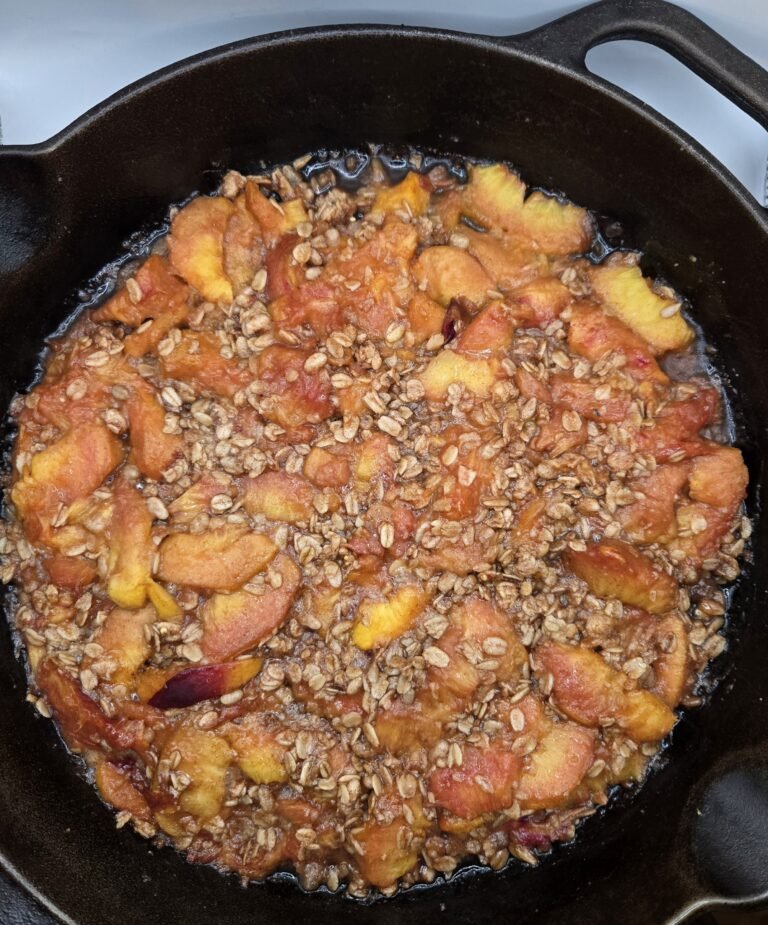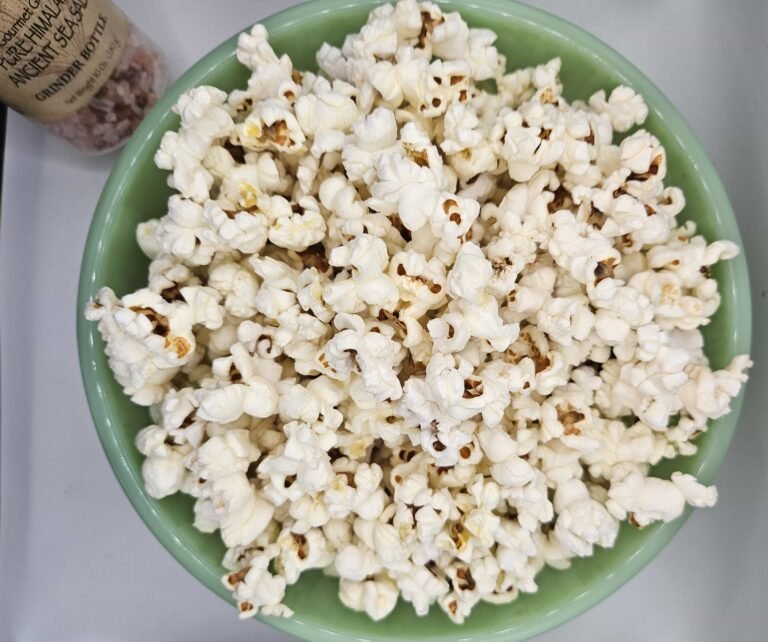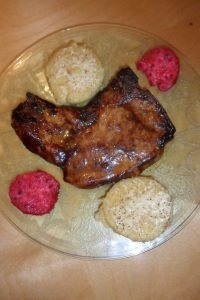
My favorite way of having pork chops is breaded and baked because that’s how my Grandma made them, although I rarely cook pork. Today I was trying to use up stuff in the freezer and pulled out pork chops, but didn’t have time for the breading. Cook them longer if they’re thick, but dried out meat is a total drag – you might as well chew on your shoe – so I really wouldn’t go over 5 minutes per side.
Overcooking all meat to the temperature necessary for ground meat increased in popularity in the 1980s[1] when the USDA recommended it because factory meat had bacteria like salmonella (chicken & beef), trichinella (pork), e coli (beef), parasites, etc. They exceeded the temperature at which the bacteria die, to be safe, so a whole generation grew up with overcooked meat.
Unfortunately, at about the same temperature that bacteria die, the collagen in the tissue of the meats break down and dissolves causing the meat to toughen and lose flavor.[2] Cooking meat at high-temperature, charring, and processing (smoking, curing, salting or addition of chemical preservatives) leads to the formation of cancer-causing compounds and a higher risk of stomach cancer. Meat consumption in the U.S. is more than three times the global average and has been particularly pertinent to researchers and other public health professionals aiming to reduce the global burden of chronic disease since the 1950s.[3]
In 2011 the USDA lowered the cooking temperature guidelines to 145 degrees for beef, pork, veal and lamb steaks, chops, roasts, and hams with the three-minute rest time afterward during which time meat temperature continues to rise.[4] Many chefs argue that 145 should be the final temperature after rest time. Again, these are for chops, steaks, etc., (that have not been punctured) – ground meat has bacteria throughout and still needs to reach 160 degrees to be safe.
I’m only calling these Asian pork chops because I had an opened jar of hoisin sauce in the cupboard. It should have gone in the frig when I opened it in … June? since that’s the last time I used it in my blog. Last summer I bought these four pork chops at the Frederick Shab Row farmer’s market. I don’t remember the name of the farm so I’ll have to tell you next year!
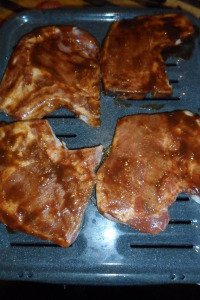
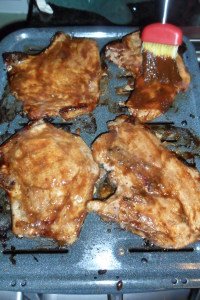
Asian Pork Chops
4 pork chops
1/2 cup hoisin sauce
2 crushed cloves garlic
2 T red wine vinegar
1 t paprika
1/4 t chili powder
Whisk together hoisin sauce and next four ingredients. Generously brush sauce over both sides of the chops and put on broiler pan. (If you have time, you can marinate in the frig for up to 4 hours.) Sprinkle chops with sea salt and ground pepper, or season salt.
Broil (grill is OK too) 3 to 4 minutes on each side or until done. Brush with more sauce each time before and after turning them.
[1] “Increase in Food Contamination: USDA Wants Warning Label on Uncooked Meat Packages” Daniel Puzo, Los Angeles Times, January 5, 1989.
[2] “The Effects of Cooking Temperature and Time on Some Mechanical Properties of Meat,” PE Boutton and PV Harris, Journal of Food Science, Aug. 25, 2006.
[3] “Trends in meat consumption in the United States,” C Daniel, A Cross, C Koebnick, R Sinha, Public Health and Nutrition, Apr 2011, 14(4): 575–583.
[4] “Safe Minimum Internal Temperature Chart,” U.S. Department of Agriculture’s Food Safety Inspection Service (FSIS).

